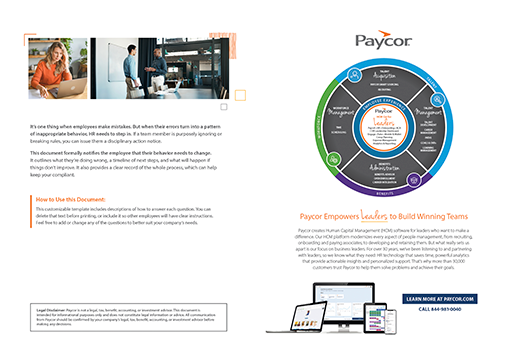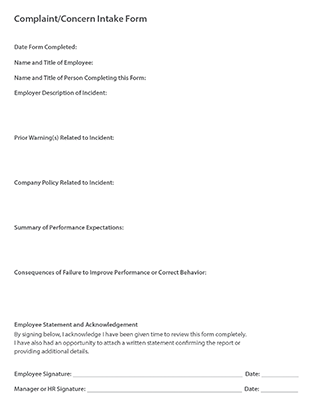How to Issue a Disciplinary Action Notice
Employees make mistakes sometimes. There’s just no way around it. But when their errors turn into a pattern of inappropriate behavior, HR needs to step in. If they’re just unaware of company policies, a quick conversation could solve the problem. But if they’re intentionally ignoring or breaking rules, you might need to issue a disciplinary action notice.
This document formally notifies the employee that their behavior is unacceptable. It also outlines the consequences of their actions, including a clear disciplinary procedure. By documenting the process, HR ensures it will be fair to everyone, holding both employees and leaders accountable.
What is a Disciplinary Action Notice?
A disciplinary form for employees should document what’s happening with as much detail as possible. It’s not just an action plan, it’s also a record of any official decisions made by HR. The notice should include:
- The employee’s behavior, including dates, times, and context. This could include poor performance, absenteeism, violation of company policy, and similar.
- Descriptions of any past verbal warnings the employee has received about similar issues
- Company policy, with quotes from the employee handbook if possible
- How the employee’s actions violate company policy
- Expectations for how the employee will improve, including a timeline and specific next steps
- Potential consequences if the employee fails to improve
- The employee’s signature, formally acknowledging they’ve received and understand the disciplinary action form
Discipline and Compliance
Disciplinary notices help HR maintain compliance. When you issue an employee disciplinary action form, you’re giving the employee a chance to change course with corrective action before you resort to termination. If their behavior improves, so much the better! And if not, you’ll have a clear record of what happened. That way, if any legal issues come up, you can prove that you did your due diligence before letting them go.
Over time, these records can help you improve company culture. If a series of workers commit the same violation over several years, it could be a sign of a training gap. Or if you’re always submitting employee write-ups for people in one department, those managers might need more support.
How Disciplinary Actions Improve Workplace Culture
When it comes to disciplinary action, submitting a form is just the first step. Before you ever write up an employee, HR should already have a plan for what comes next. That could include an internal timeline of next steps, or a list of resources to share with the employee. When you have a clear roadmap in place, you can hold both employees and leaders accountable.
This level of transparency fosters trust within the team. Other team members will see that when problems come up, leaders respond consistently and as a unified front. They’ll know who to ask for help, what to expect when things go wrong, and what you expect of them at work.
Ideally, a disciplinary action form should serve as a wake-up call. Some employees will fail to improve and leave your company, but others will use it as an opportunity to grow. HR should be ready to support these team members and help them learn. Talent development software is essential here. These tools empower you to upskill employees, plan and manage their career tracks, and give meaningful feedback.
How Paycor Helps
Before, during, and after a disciplinary process, it’s HR’s job to support everyone on the team. Sometimes, that means writing up a person who’s working against company goals. But with the right HR tools, it might not need to go that far.
Paycor’s Talent Development Software helps leaders connect with employees. You can track key goals, align your workforce with company priorities, and create a culture of feedback. Publicly recognize employees who are doing well and build coaching sessions for anyone who needs more support. If you ever need to take disciplinary action, you’ll have a clear record of what led to that point.











